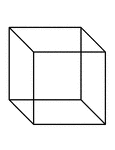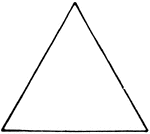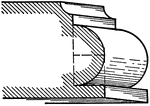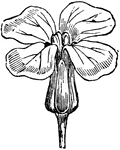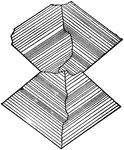
Arsenopyrite
"Orthohombric. Usually in tabular diamond-shaped crystals, formed by a short prism terminated by low…
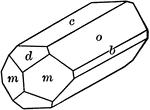
Celestite
"Orthorhombic. Crystals resemble closely those of barite. Commonly tabular parallel to the base or prismatic…
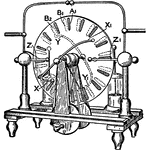
Wimshurst Electric Machine
"The essential parts of an ordinary Wimshurst machine, are two ordinary drums. On each plate are fixed…

Hydrometer
Nicholson's Hydrometer, consists of a hollow cylinder of metal with conical ends, terminated above by…

Hydrometer
Nicholson's Hydrometer, consists of a hollow cylinder of metal with conical ends, terminated above by…
Rhomboid
A rhomboid is a parallelogam whose opposite sides are equal, and whose angles are not right angles.

Raised Fillet
A roman moulding, called Raised Fillet. Its projection is generally made equal to its height.…
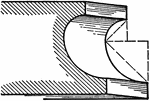
Scotia
A roman moulding, called a Scotia. It consists of two quarter circles one of which has a radius…

Bedouin
A generic name for a desert-dweller, a term generally applied to Arab nomadic groups, who are found…
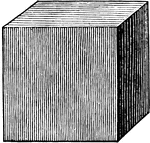
Cube
A regular body with six square faces; a rectangular parallelopiped, having all its edges equal.

Electricity
This illustration represents the field between two equal positive charges; in this case the lines of…

Electricity
This illustration shows the lines of force when a positive charge equal to 4 at A, and a negative charge…

Electricity
A is a positively charged conductor and B represents the equal and oppsite charge. When the conductor…
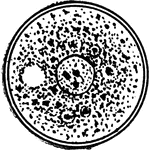
Spherical Cell
"Spherical cell (resting stage of Amoeba) illustrating general or universal symmetry. Any plane passing…

Half Pice
A money of account and a copper coin. Equal to three foourths of the United States cent at the time.
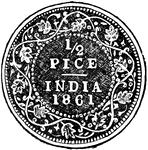
Half Pice
A money of account and a copper coin. Equal to three foourths of the United States cent at the time.
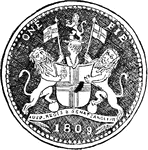
Pie
The smallest Anglo–Indian copper coin, equal to one third of a pice. About one fourth of a United…
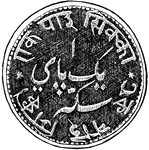
Pie
The smallest Anglo&mdashIndian copper coin, equal to one third of a pice. About one fourth of a United…
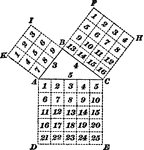
Right Triangle
"In any right triangle, the square described on the hypotenuse is equal to the sum of the squares described…

Fixed Pulley
"A fixed pulley is one whose block is not movable. In this case, if the weight W be lifted by pulling…
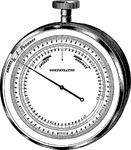
Aneroid Barometer
"The principal part of the aneroid barometer is a cylindrical air-tight box of metal closed by a corrugated…

Brachelytra
"Readily distinguished from the other groups of beetles by having the elytra much shorter then the abdomen,…

Brick Retort
"These brick retorts are 9 feet long and with diameters of 22 and 13.5 inches, set four in an oven to…
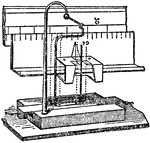
Slider of Kelvin Ampere Balance
"The upper edge of the shelf on which the weights slide is graduated into equal divisions, and the weight…
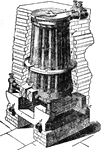
Duplex Tubular Boiler
"The Duplex is made in two equal parts, each being capable of being worked alone. Each section consists…

Rectangle
A quadrilateral plane figure having four right angles and its opposite sides equal in length. The adjacent…

Hosiery
"In the year 1589 the stocking-frame, the machine which mechanically produces the looped stitch in hosiery,…
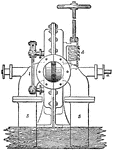
Reaction Turbine
"Professor James Thomson's inward flow or vortex turbine has been selected as the type of reaction turbines.…
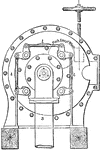
Reaction Turbine
"Professor James Thomson's inward flow or vortex turbine has been selected as the type of reaction turbines.…
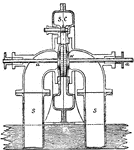
Reaction Turbine
"Professor James Thomson's inward flow or vortex turbine has been selected as the type of reaction turbines.…
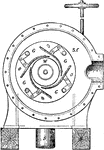
Reaction Turbine
"Professor James Thomson's inward flow or vortex turbine has been selected as the type of reaction turbines.…
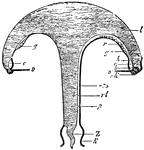
Anthomedusae
"Medusiform person, one of the Anthomedusae, detached from a hydroid colony of Syncoryne. Ocelli are…
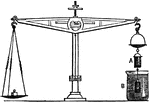
Archimedes Principle
"States that: A body when immersed in a fluid loses exactly as much of its weight as is equal to the…
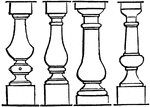
Baluster
"Popularly, banister or ballaster, the name given to small shafts or pillars set in a line at short…
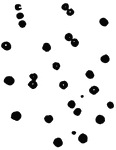
Micrococci
"Characteristic groups of Micrococci. Micrococcus prodigiosus." — The Encyclopedia Britannica,…

Micrococci
"Characteristic groups of Micrococci. Micrococcus vaccinae." — The Encyclopedia Britannica, 1910
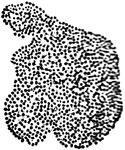
Micrococci
"Characteristic groups of Micrococci. Zoogloea stage of a Micrococcus, forming a close membrane on infusion."…

Obolus
"A small coin of ancient Greece, in later times of silver, the sixth part of an Attic drachma, equal…

Chain-Pump
"The chain-pump consists of a tube or cylinder, the lower part of which is immersed in a well or reservoir,…
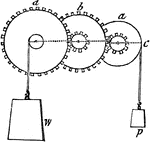
System of Wheels
"System of Wheels.—As the wheel and axle is only a modification of the simple lever, so a system…
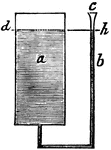
Water Pressure
"Suppose the cistern a to be capable of holding one hundred gallons, and into its bottom there be fitted…

Water Pressure
"Suppose a number of vessels, of different shapes and sizes to have a communication between them, by…

Hydraulic Bellows
"An instrument called the hydrostatic bellows, also shows, in a striking manner, the great force of…

Mountain Rupture
"Rupture of a Mountain.—There is no doubt, but in the operations of nature, great effects are…
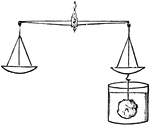
Water Weighing
"Take a piece of ivory, or any other substance that will sink in water, and weigh it accurately in the…

Compression Experiment
"If the strong tube, or barrel, be smooth, and equal on the inside, and there be fitted to it the solid…
Atmospheric Pressure
"The pressure of the atmosphere may be easily shown by the tube and piston. suppose there is an orifice…
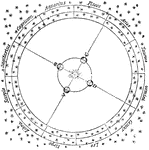
Zodiac Signs
"The twelve signs of the zodiac, together with the Sun, and the Earth revolving around him. When the…
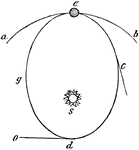
Planet Motion
"Elliptical Orbits.—It has been supposed that the Sun's attraction, which constitutes the Earth's…
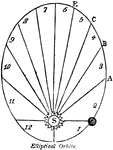
Elliptical Orbit
"The elliptical circle being supposed to be the Earth's orbit, with the Sun, S, in one of the foci.…
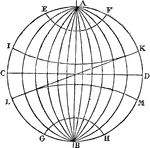
Earth Divisions
"The Earth, whose diameter is 7,912 miles, is represented by the globe, or sphere. The straight line…

Screwing Machine
"The machine is in fact a lathe with a few special features, such as the hollow mandrel, which enables…
